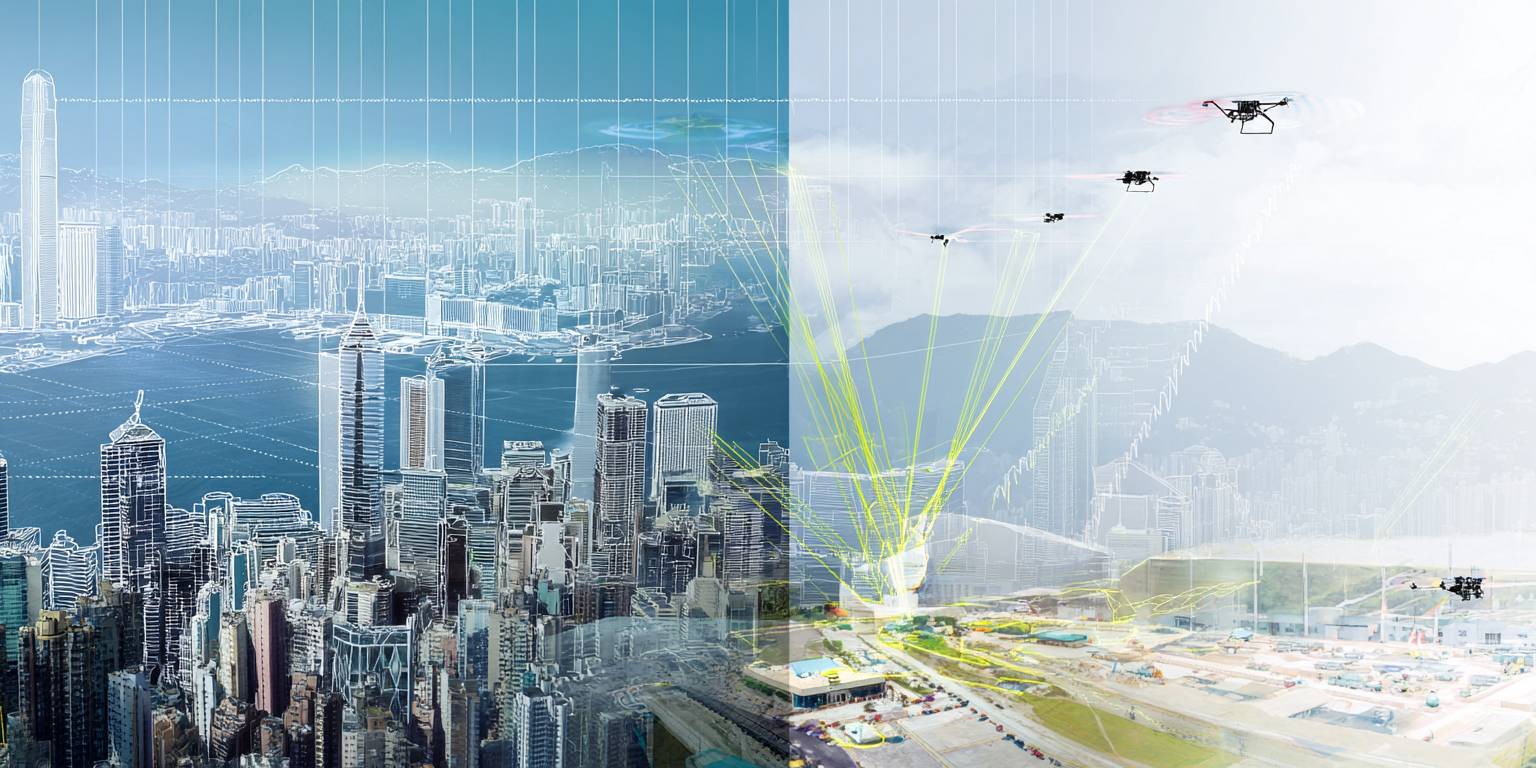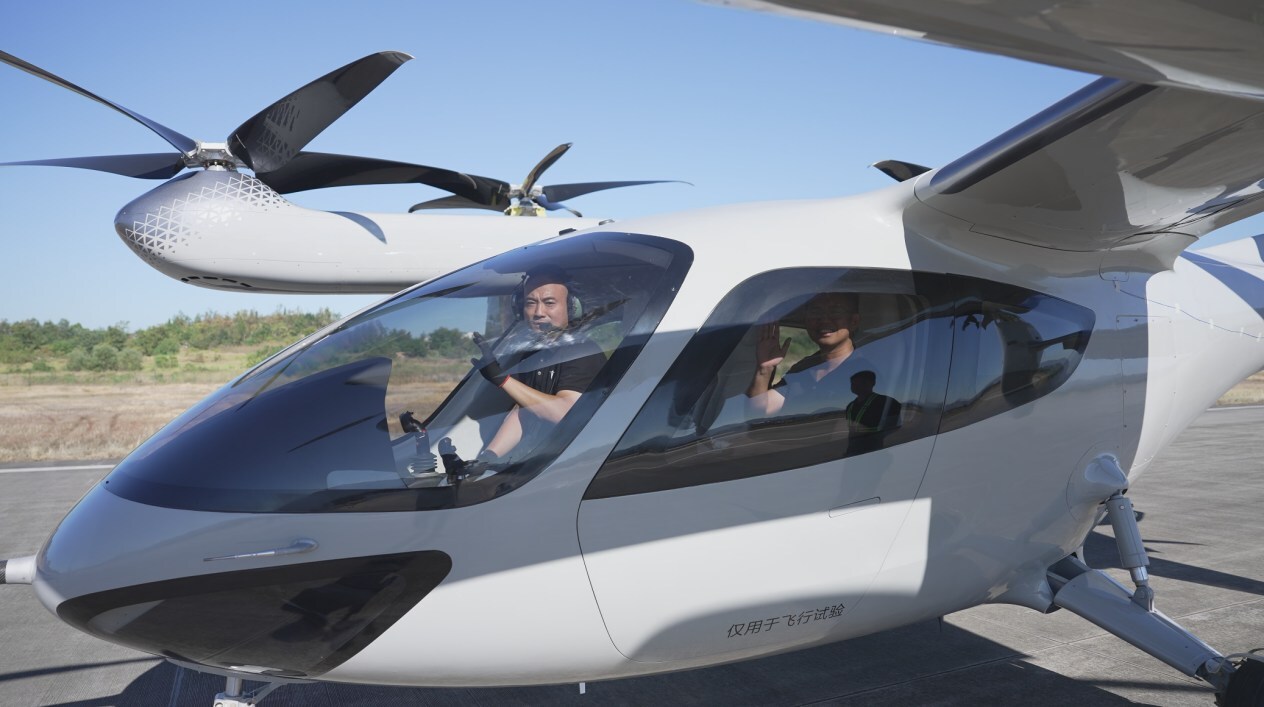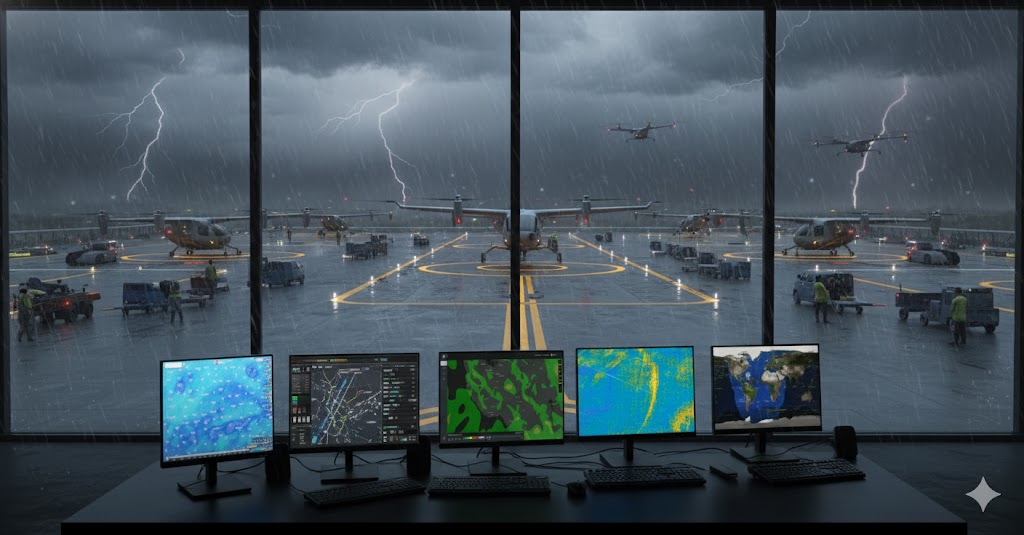TCab Tech, founded in Shanghai in 2021 by Yon Wui Ng and a team of aerospace engineers, has quickly established itself as a leader in China’s advanced air mobility sector. The company’s mission, reflected in its name “Time Taxi,” is to provide zero-emission, time-saving aerial transportation for urban environments. TCab Tech’s flagship project, the E20 eVTOL aircraft, is at the heart of its recent industry prominence and investment surge.
The E20 represents a significant leap in eVTOL design and production for China. This five-seat aircraft, accommodating one pilot and four passengers, features a tilt-rotor architecture that combines the vertical lift capabilities of helicopters with the cruise efficiency of fixed-wing aircraft. With a cruise speed of 260 km/h (162 mph), a maximum speed of 320 km/h (199 mph), and a range of 200 km (125 miles), the E20 is engineered for rapid, point-to-point regional and urban transport.
It uses six electric motors powered by four tilt propellers for vertical and forward flight, plus two double-stacked rotors dedicated to vertical takeoff and landing. The aircraft’s carbon fiber composite fuselage, panoramic wraparound windows, and high seagull wing enhance passenger safety and comfort and provide operational efficiency and spectacular city views.
Safety and reliability are core to the E20’s design. The aircraft uses distributed electric propulsion (DEP), ensuring that the failure of one or more motors or propellers does not compromise flight safety. Critical systems are redundant, and in the unlikely event of a complete propeller failure, the E20 can glide safely to a landing. The 800V ultra-fast charging system enables rapid turnaround, supporting high-frequency operations in busy urban corridors.
TCab Tech’s recent commercialization efforts have accelerated the E20’s path to market. In March 2025, the company secured a $34.73 million Series B-II funding round, raising total capital to about $100 million. This investment is fueling the industrialization of the E20, with a focus on scaling production and developing vertiport infrastructure across Shanghai and the Yangtze River Delta. The funds also support the ongoing type certification process with the Civil Aviation Administration of China (CAAC), which is expected to be completed by late 2026. Strategic partnerships with investors further strengthen TCab Tech’s influence in shaping low-altitude airspace regulations and expanding regional air routes.
A major milestone in April 2025 cemented TCab Tech’s commercial viability: BOC Leasing, a subsidiary of Bank of China, placed an order for 100 E20 aircraft, marking the largest single eVTOL procurement by a financial institution in China. This partnership provides the capital and financial expertise needed to ramp up production and opens avenues for innovative leasing models tailored to urban air taxi operators and emergency medical services. The collaboration is expected to facilitate the E20’s entry into domestic and international markets, including the Middle East, through TCab’s partnership with UAE-based Autocraft.
With its advanced tilt-rotor technology, robust safety features, and strong financial backing, TCab Tech is poised to play a pivotal role in the future of urban air mobility. The E20’s development and production are setting new standards for efficiency, safety, and sustainability in the eVTOL sector, positioning the company at the forefront of China’s and the world’s next-generation transportation solutions.
Technical Specifications of the E20 eVTOL Aircraft
The E20 epitomizes TCab Tech’s engineering prowess, combining safety, efficiency, and scalability. Key specifications include:
Performance Metrics
-
Speed: A cruise speed of 260 km/h (162 mph) and maximum speed of 320 km/h (199 mph), enabling rapid intercity travel.
-
Range: 200 km (124 miles) on a single charge, sufficient for urban and regional routes.
-
Payload Capacity: 450 kg (992 lb), accommodating one pilot and four passengers.
-
Charging: An 800V ultra-fast charging system reduces downtime to 30 minutes, enhancing operational efficiency.
Propulsion and Safety Systems
-
Tilt-Rotor Design: Four tilt-propellers enable vertical takeoff and efficient forward flight, while two double-stacked rotors provide redundancy during VTOL phases.
-
Redundancy: The propulsion and flight control systems lack single points of failure, ensuring continued operation even during partial malfunctions.
-
Glide Capability: The E20 can glide to a safe landing using its fixed-wing design in total rotor failure.
Materials and Manufacturing
-
Carbon Fiber Composite: The airframe’s lightweight yet durable construction maximizes energy efficiency and payload capacity.
-
Modular Design: Future variants plan to expand seating from 5 to 20 passengers, catering to diverse commercial applications.
Comparative Analysis of Leading eVTOL Aircraft
The urban air mobility sector is rapidly evolving with several manufacturers developing electric vertical takeoff and landing (eVTOL) aircraft. Each company brings unique approaches to design, range capabilities, and operational features. Below is a comparison of the major competitors in this emerging market.
Each aircraft occupies a distinct position in the emerging eVTOL market:
TCab Tech E20: Positioned as a mid-range urban air taxi with balanced performance metrics and a focus on safety through redundant systems.
EHang EH216-S: Targets short-range urban hops with its fully autonomous operation, eliminating pilot training requirements but with limited range and passenger capacity.
Joby S4: Focuses on longer-range urban and suburban connections with industry-leading speed and noise reduction technology.
AutoFlight Prosperity I: Emphasizes operational flexibility with its separate lift and cruise propulsion systems and the longest range among competitors.
Competitive Landscape: eVTOL Aircraft Comparison
| Aircraft | TCab Tech E20 | EHang EH216-S | Joby S4 | AutoFlight Prosperity I |
|---|---|---|---|---|
| Manufacturer | TCab Tech (China) | EHang (China) | Joby Aviation (USA) | AutoFlight (China) |
| Design/Configuration | Tilt-rotor (fixed wing + VTOL) | Multicopter | Tilt-propeller | Lift + Cruise |
| Piloting | 1 pilot | Fully autonomous | 1 pilot | 1 pilot |
| Passenger Capacity | 4 passengers | 2 passengers | 4 passengers | 3 passengers |
| Max Speed | 260 km/h (162 mph) | 130 km/h (81 mph) | 322 km/h (200 mph) | 200+ km/h |
| Range | 200 km (125 miles) | 35 km (22 miles) | 161 km (100 miles) | 250+ km |
| Estimated Cost | ~$960,900 | ~$410,000 | N/A | N/A |
| Certification Target | 2026 (CAAC) | Certified (CAAC) | Advancing (FAA) | 2025 (target) |
| Key Strengths | Long range, high speed, redundancy, glide capability | Low cost, autonomous, compact for dense cities | Fast, quiet, long range | Longest range, modular for cargo/passenger |
What These Differences Mean for Market Adoption
-
TCab Tech E20: With its 200 km range and 260 km/h cruise speed, the E20 is optimized for high-frequency, medium-range urban and regional routes- think Shanghai to Suzhou or intercity airport transfers. Its tilt-rotor design combines the vertical agility of helicopters with the efficiency of fixed-wing flight, making it ideal for operators who need city-center access and the ability to cover longer distances. The E20’s redundancy and glide capability also appeal to safety-conscious operators and regulators, supporting its adoption in passenger and critical services (e.g., medical transport). Its higher capacity (4 passengers) and moderate price point make it attractive for air taxi fleets serving business commuters and premium travelers.
-
EHang EH216-S: The EH216-S’s fully autonomous, multicopper design is best suited for short, dense, urban hops, such as last-mile connections or shuttle services within a single metropolitan area. Its compact size and simple deployment requirements allow flexible integration into urban landscapes with minimal infrastructure changes. The low acquisition and operating costs and lack of a pilot make it appealing for mass transit in cities with high population density and limited space. However, the limited range (35 km) restricts it to intra-city use, and its two-seat capacity is best for shuttle or on-demand services rather than group or business travel.
-
Joby S4: With a top speed of 322 km/h and a range of 161 km, the Joby S4 targets premium, longer-distance urban and suburban routes, such as city-to-airport or intercity connections in sprawling metropolitan areas. Its exceptionally quiet operation makes it suitable for noise-sensitive environments, and its capacity matches the E20, making it a direct competitor for high-end urban air taxi services in North America and Europe. The S4’s advanced certification process with the FAA also positions it for early adoption in regulated Western markets.
-
AutoFlight Prosperity I: Boasting the longest range (250+ km) and a modular design, Prosperity I is well-positioned for regional routes, cargo, and passenger services. Its operational flexibility makes it suitable for logistics companies, regional air mobility providers, and operators looking to serve less densely populated corridors where range is critical. The semi-autonomous piloting also allows for a gradual transition to full autonomy as regulations evolve.
Customer Segments Best Served
| Aircraft | Ideal Use Cases | Primary Customer Segments |
|---|---|---|
| TCab Tech E20 | Urban/regional air taxi, business commuter, medical/emergency transport | Air taxi operators, business travel, EMS providers |
| EHang EH216-S | Intra-city shuttle, last-mile urban mobility, sightseeing | Urban shuttle operators, city planners, tourism |
| Joby S4 | Urban/suburban premium air taxi, city-to-airport, intercity | Premium air taxi, business travelers, airport shuttle |
| AutoFlight Prosperity I | Regional air mobility, cargo delivery, mixed-use | Logistics companies, regional air mobility, cargo operators |
The E20’s speed, range, and safety features make it a strong contender for high-frequency, medium-range urban and regional routes, especially where reliability and capacity are valued. EHang’s EH216-S excels in dense urban environments needing flexible, low-cost, autonomous solutions for short hops. Joby S4 is tailored for premium, longer-range urban connections, while AutoFlight Prosperity I stands out for regional and cargo operations where range and modularity are paramount. Each aircraft’s technical profile directly shapes its most promising market segments and operational roles.
Future Roadmap
China’s regulatory and infrastructure environment uniquely supports advanced air mobility, setting the stage for rapid eVTOL adoption and commercialization. Over the past several years, the Chinese government has prioritized developing the low-altitude economy, integrating it into top-level policy and economic planning. The Civil Aviation Administration of China (CAAC) has introduced a flexible regulatory framework for low-altitude airspace, streamlining flight approvals and reducing bureaucratic barriers that have slowed progress in other countries. This regulatory clarity is reinforced by ongoing legislative updates, such as the proposed revisions to the Civil Aviation Law in 2025, which aim to ensure rational airspace allocation and robust safety standards for both operators and infrastructure.
On the infrastructure front, China is investing heavily in vertiports and supporting facilities. As of early 2025, more than 388 new vertiport programs have been launched in just five months, with cities like Shenzhen planning over 1,200 take-off and landing platforms for air taxis and drones by 2026. Local governments are not only funding vertiport construction. Still, they are also opening up hundreds of new low-altitude air routes, as in Hangzhou and Anhui, to facilitate urban and regional aerial mobility. This coordinated, top-down approach, combining central policy direction with empowered local execution, has created a fertile environment for companies like TCab Tech to scale production, accelerate certification, and rapidly deploy their aircraft across China’s most populous and economically dynamic regions.
TCab Tech has articulated an ambitious vision for the E20 platform extending well beyond its initial five-seat configuration. The company plans to develop a comprehensive product line that includes 6-seater, 8-seater, 10-seater, and ultimately 20-seater variants to address diverse commercial applications.
The certification process continues to advance, with the company completing the certification basis (G1 Issue Paper) with CAAC in December 2024. Following anticipated certification in late 2026, TCab Tech plans to launch trial routes in Shanghai and other cities in the Pearl River and Yangtze River Deltas, with widespread air taxi operations expected by 2035.
With over 200 pre-orders secured and strategic partnerships, including collaboration with Autocraft for UAE operations, TCab Tech is well-positioned to capitalize on the growing demand for sustainable urban air mobility solutions.




